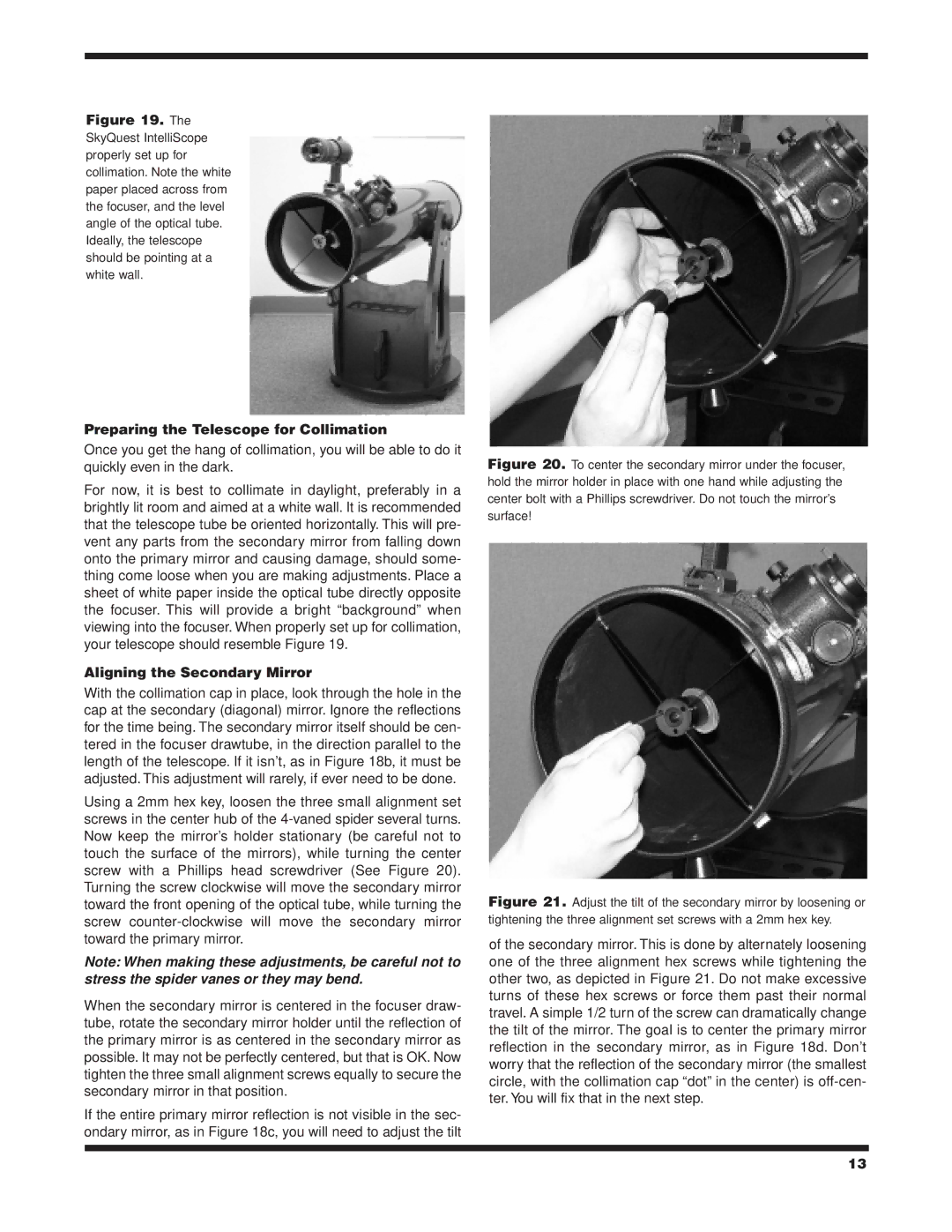
Figure 19. The
SkyQuest IntelliScope properly set up for collimation. Note the white paper placed across from the focuser, and the level angle of the optical tube. Ideally, the telescope should be pointing at a white wall.
Preparing the Telescope for Collimation
Once you get the hang of collimation, you will be able to do it quickly even in the dark.
For now, it is best to collimate in daylight, preferably in a brightly lit room and aimed at a white wall. It is recommended that the telescope tube be oriented horizontally. This will pre- vent any parts from the secondary mirror from falling down onto the primary mirror and causing damage, should some- thing come loose when you are making adjustments. Place a sheet of white paper inside the optical tube directly opposite the focuser. This will provide a bright “background” when viewing into the focuser. When properly set up for collimation, your telescope should resemble Figure 19.
Aligning the Secondary Mirror
With the collimation cap in place, look through the hole in the cap at the secondary (diagonal) mirror. Ignore the reflections for the time being. The secondary mirror itself should be cen- tered in the focuser drawtube, in the direction parallel to the length of the telescope. If it isn’t, as in Figure 18b, it must be adjusted. This adjustment will rarely, if ever need to be done.
Using a 2mm hex key, loosen the three small alignment set screws in the center hub of the
Note: When making these adjustments, be careful not to stress the spider vanes or they may bend.
When the secondary mirror is centered in the focuser draw- tube, rotate the secondary mirror holder until the reflection of the primary mirror is as centered in the secondary mirror as possible. It may not be perfectly centered, but that is OK. Now tighten the three small alignment screws equally to secure the secondary mirror in that position.
If the entire primary mirror reflection is not visible in the sec- ondary mirror, as in Figure 18c, you will need to adjust the tilt
Figure 20. To center the secondary mirror under the focuser, hold the mirror holder in place with one hand while adjusting the center bolt with a Phillips screwdriver. Do not touch the mirror’s surface!
Figure 21. Adjust the tilt of the secondary mirror by loosening or tightening the three alignment set screws with a 2mm hex key.
of the secondary mirror. This is done by alternately loosening one of the three alignment hex screws while tightening the other two, as depicted in Figure 21. Do not make excessive turns of these hex screws or force them past their normal travel. A simple 1/2 turn of the screw can dramatically change the tilt of the mirror. The goal is to center the primary mirror reflection in the secondary mirror, as in Figure 18d. Don’t worry that the reflection of the secondary mirror (the smallest circle, with the collimation cap “dot” in the center) is off-cen- ter. You will fix that in the next step.
13
